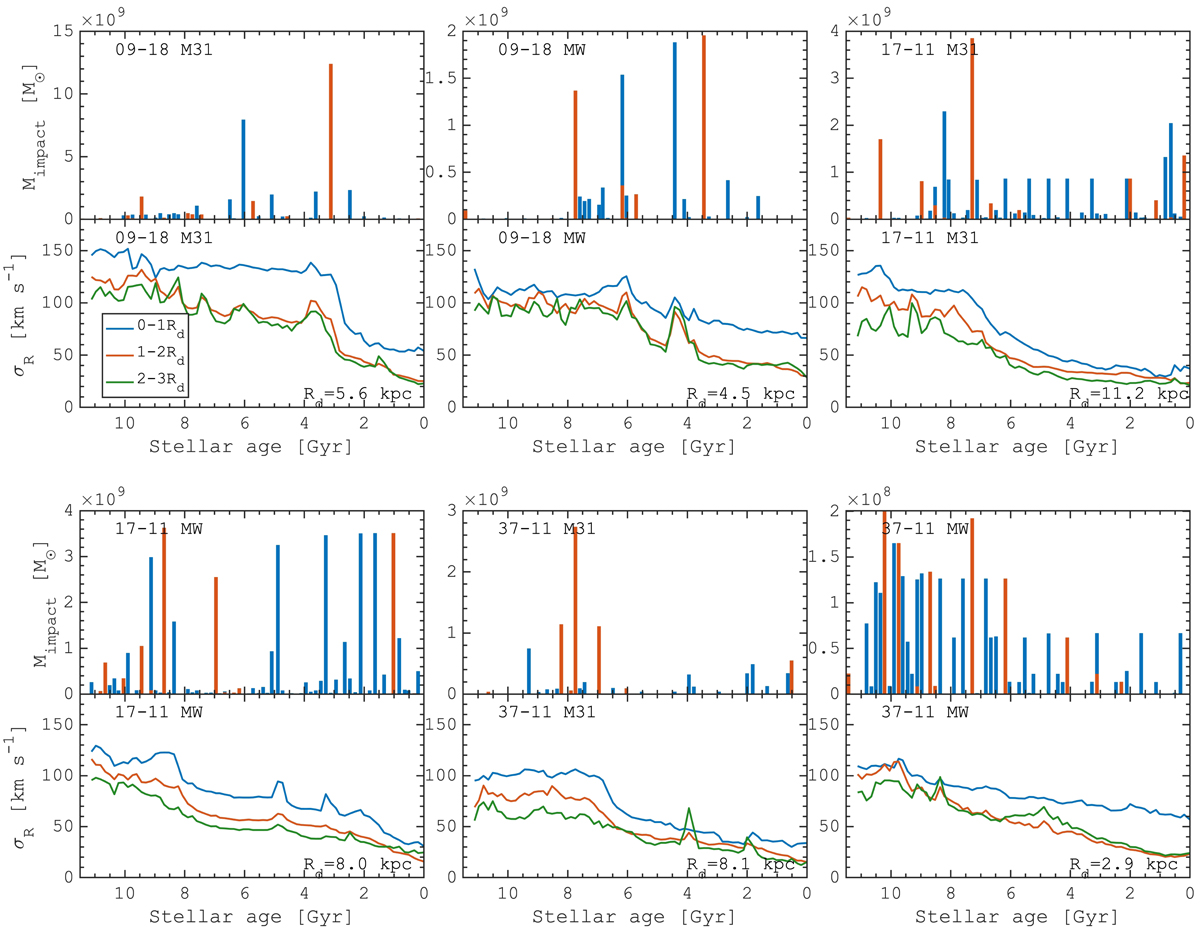Fig. 8.

Download original image
Impact of the most significant mergers and close pericentric passages of massive satellites on the age-radial velocity dispersion (σR) relation of M 31 and MW HESTIA galaxies. For each galaxy, in the top panels we highlight the time of the close passages (< 10 kpc from the host) and the stellar mass (Mimpact at the time of the close passage) of the dwarf galaxies which either merged (red) or survived at z = 0 (blue). The bottom panels show the stellar velocity dispersion as a function of the stellar age time for three galactocentric regions: (0 − 1) Rd (blue), (1 − 2) Rd (red), and (2 − 3) Rd (green), where Rd is the disc scale length at z = 0. The growth of the stellar velocity dispersion with the stellar age is remarkable in all the HESTIA galaxies, where in addition to the secular increase likely being caused by the scattering of stars on the spiral arms, we find some age ranges where the velocity dispersion increases faster. These features in stellar kinematics are linked to the impact of the mergers, which heat up the stars that formed before the merger. In the case in which several mergers occurred, the impact of the earliest ones is hard to see because the most recent ones, especially if they are more massive, heat up the disc to the maximal values.
Current usage metrics show cumulative count of Article Views (full-text article views including HTML views, PDF and ePub downloads, according to the available data) and Abstracts Views on Vision4Press platform.
Data correspond to usage on the plateform after 2015. The current usage metrics is available 48-96 hours after online publication and is updated daily on week days.
Initial download of the metrics may take a while.


